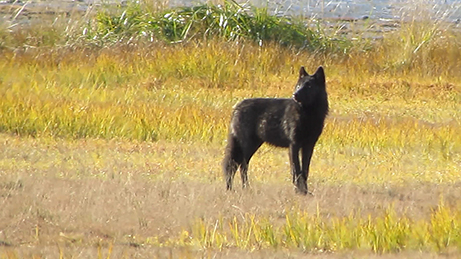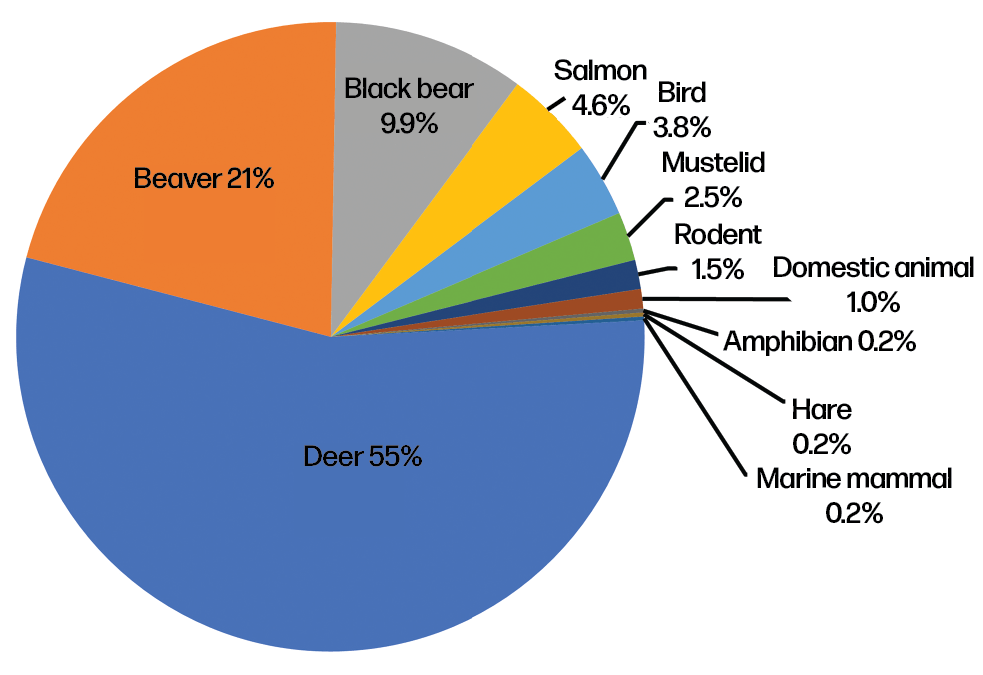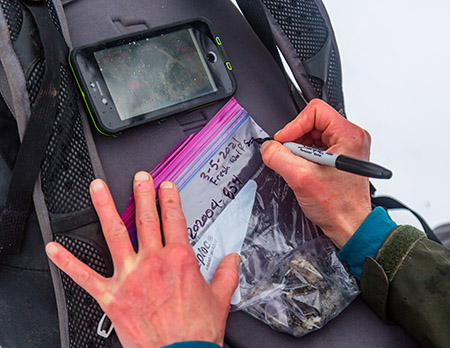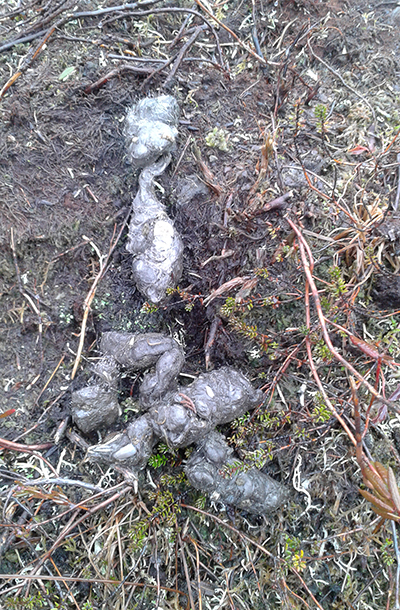Alaska Fish & Wildlife News
February 2024
Deer Steak, Beaver Tail, and a Fish to Finish it
What do wolves eat for dinner on P.O.W. Island?

It’s not surprising that on Prince of Wales Island deer are wolves’ primary food source. But are deer their only food source or do they eat a variety of prey? Gretchen Roffler, a biologist with ADF&G, along with collaborators at Oregon State University, analyzed wolf scats to see what wolves across Southeast Alaska eat and how their diet changed throughout the year.
In a peer-reviewed article published in 2021, Roffler and collaborators reported the results from the analysis of 860 scats collected from 2010 to 2018 by ADF&G biologists, other agencies and the public, including 301 scats from POW.
Until recently, contents of predator scats were identified by looking for hair, bones, feathers, etc., that identified the animal eaten, but that only informs about larger prey with identifiable remains. To learn more about wolf diet Roffler and colleagues used a new technique called DNA metabarcoding. This technique identifies prey species by DNA found in scats. Deer accounted for just over half (55%) of all prey items detected in POW wolf scats, followed by beaver (21%) and black bear (10%), but P.O.W. wolves included many other prey in their diet (see pie chart). On average, 1.63 prey items were found per scat indicating most scats included two or more prey species.


Diets of POW wolves were generally similar to diets of wolves elsewhere in Southeast Alaska. Hooved animals like deer, moose, and mountain goats makes up most of what wolves eat in Southeast Alaska. But sometimes wolves turn to a more diverse diet. For example, on Pleasant Island near Gustavus, where wolves have eaten most or all of the former deer population, wolves have turned to sea otters as their primary prey supplemented by intertidal fish and waterfowl.
ADF&G is investigating changes in wolf diet over time, so ADF&G biologists, Roffler and Alex Lewis, continue to collect wolf scats from all over Southeast Alaska. The public is encouraged to collect scats for ADF&G. For more information contact Alex Lewis at alex.lewis@alaska.gov.
How to submit wolf scat samples

Place wolf scat in a Ziploc bag and write the following on the outside of the bag with a black, permanent marker:
• Wolf scat – age (e.g. fresh, old, ancient)
• Location (e.g. Staney Creek)
• Date
• GPS Coordinates (decimal degrees preferred, but not necessary)
Keep scat in a freezer until you contact ADF&G for further instructions. For more information, contact Alex Lewis — alex.lewis@alaska.gov.
Subscribe to be notified about new issues
Receive a monthly notice about new issues and articles.
